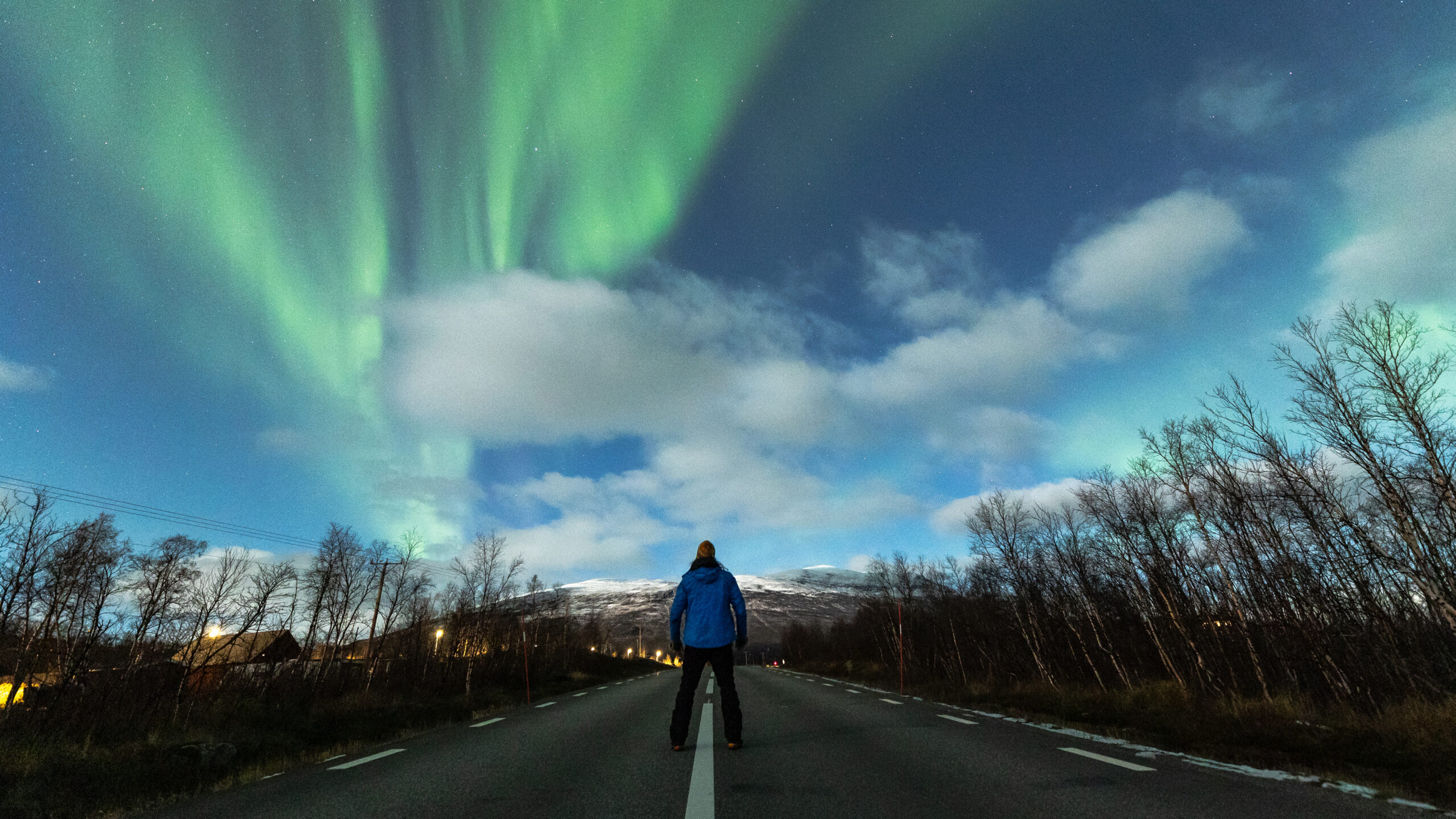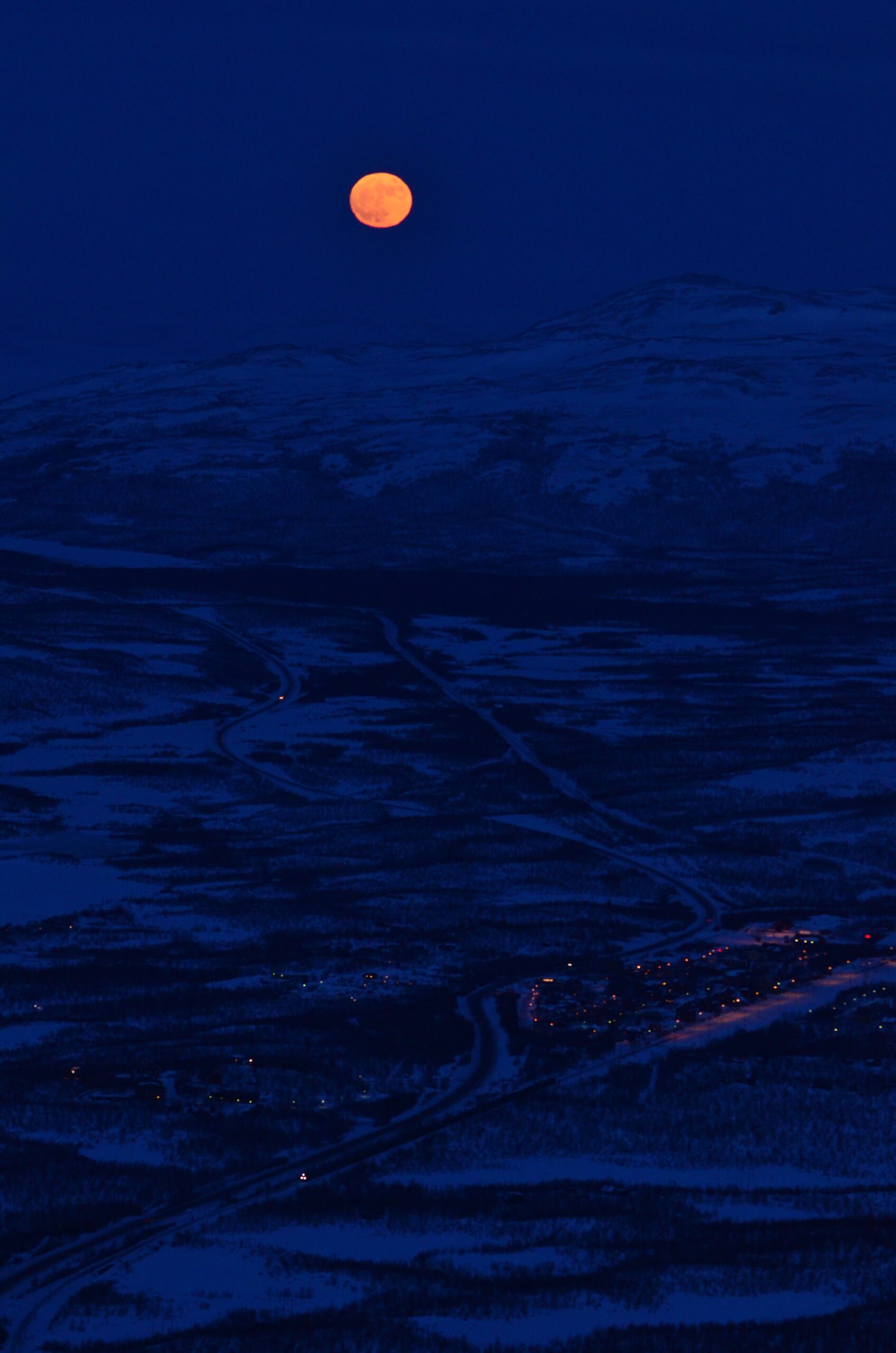The northern lights and a full moon make an incredible couple. Wait, what? That can’t be right. After all, isn’t as little external light as possible the key to witnessing the dancing Auroras with our own eyes? Indeed, it is. Light pollution is a big factor determining whether we may or may not see the Northern lights in certain locations. It is also one of the reasons why Abisko is one of the best places on earth to see the Auroras. Still, the moon certainly is a force to be reckoned with. Let’s take a look at what that means.
What is light pollution and how does it influence our ability to see Auroras?
In our day-to-day life, most of us likely don’t notice just how much light there is always around. We notice when we leave the city to look at the sky, marveling at just how many stars there actually are. We notice the orange glimmer on our way back, which seems to hover high above the houses, the streets, and the highways. This phenomenon is what we refer to as light pollution, and it hinders us from seeing everything there is to see – especially when it comes to extraterrestrial activity that involves different planets and stars. In other words, if you want to see the Aurora, you’ll find your chances increase in remote places distant from light disturbances.

Why Abisko is the perfect place to see Northern Lights?
If you ask people who have seen the Northern lights before or even those who study them, Abisko is a place that will likely come up in conversation. Tucked between mountains and Lake Torneträsk, Abisko sits right amid a National Park. Aside from the village, the tourist station, and two train stations, there are miles and miles of open land which means that the threat of light pollution remains entirely absent. But it still gets better! Thanks to the area’s microclimate, Abisko is blessed with favorable weather conditions throughout the year (if you haven’t heard or read about the blue hole of Abisko, you’re certainly missing out!).
The moon makes everything more special!
So what about the moon, its light, and its phases? Thanks to Abisko’s clear skies, the Moon is as much part of it as the stars and the incredible Northern lights. In fact, not even a full Moon has hindered guests from witnessing the Aurora dance above Abisko. More often than not the Moon helps us watch our step. It allows us to see where we are and to capture our surroundings in photos that will always bring us right back to that moment. So far off the beaten track, amid snow and ice and century-old birch, the moon allows us to ground and orient ourselves. From the imposing silhouette of Lapporten (Čuonjávággi) to the shores of Lake Torneträsk, from the foot of Mount Noulja all the way to its peak, and further up toward the sky. And when the show of Northern lights begins… Well, it’s hard to get any better than that.

